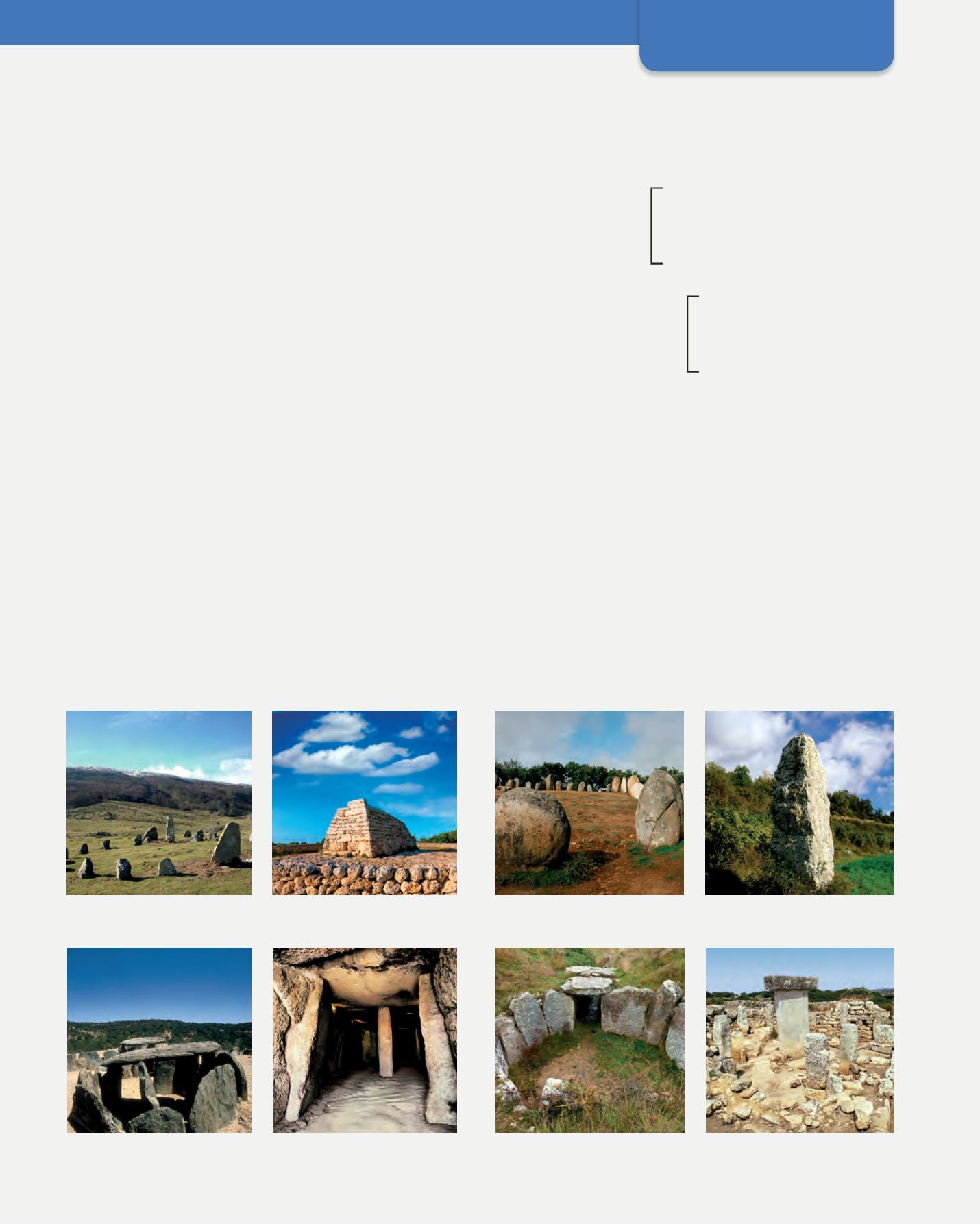
40
2. The Neolithic period and the Bronze and Iron Ages
37.
In your notebook, write a summary of the Neolithic
Period and Bronze and Iron Ages. Organise it into the
following sections:
❚
Neolithic Period
❚
causes
❚
characteristics
❚
consequences
❚
Bronze and Iron Ages
❚
causes
❚
characteristics
❚
consequences
38.
Copy these sentences in your notebook. Write true
(T) or false (F) and correct the false sentences.
❚
Agriculture allowed people to abandon a sedentary way
of life.
❚
The wheel was a very important invention which was
used for transport and pottery making.
❚
The first Neolithic villages were situated near the sea so
they had access to water.
❚
When traders repeated their journeys between one town
and another, it can be said that they established trade
routes between them.
❚
Schematic painting contained drawings that realistically
portrayed the original object.
34.
Define the following terms in your notebook.
❚
hoe
❚
Neolithic Revolution
❚
polished stone
❚
fertile
❚
pottery making
❚
spindle
❚
sedentary lifestyle
❚
pottery
❚
mother goddess
❚
chieftain
❚
metallurgy
❚
commemorative monument
❚
plinth
❚
naveta
35.
Match the advances below to the following periods,
in your notebook: the Neolithic Period, the Copper
Age, the Bronze Age or the Iron Age.
❚
copper metallurgy
❚
iron working
❚
domestication
❚
potter’s wheel
❚
agriculture
❚
Cardial pottery
❚
megalithic monuments
❚
sailing
❚
bell beaker
❚
wheel
❚
adobe
❚
alloy
36.
Look at the photos of the megalithic monuments
and write the following information about each
one in your notebook.
❚
What type of megalithic monument it is.
❚
What it was possibly used for.
❚
Which period of history it was constructed in.
Orgambide Mound (Navarra)
Citadel (Balearic Islands)
Évora (Portugal)
Isábena Valley (Huesca)
Zalamea la Real (Huesca)
Antequera (Málaga)
Huidobro (Burgos)
Alaior (Balearic Islands)
2
CONSOLIDATION


